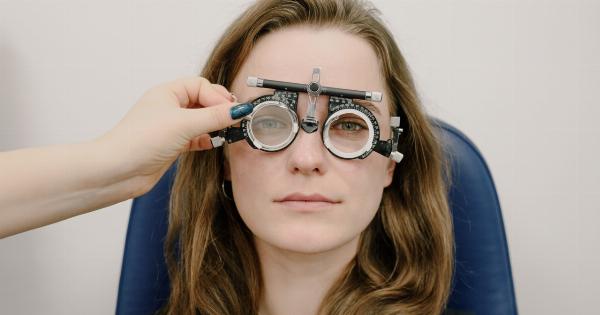For individuals suffering from partial blindness, electronic glasses have proven to be a game-changer. These glasses use cutting-edge technology to augment the eyesight of people who suffer from certain types of visual impediments.
It’s a perfect solution for people who have a degenerative eye condition, allowing them to see the world in a way they never thought possible before.
The Technology behind the Revolutionary Electronic Glasses
The glasses are designed to help overcome a wide range of visual impediments. The technology behind the glasses involves a small camera that captures the surrounding environment in real-time.
The captured image is then processed by the computer processor that is built into the glasses. The computer processor processes the scene into a high-contrast image that is easier to see for people with partial blindness.
The image is then projected onto the lenses of the glasses, worn as normal, to provide the wearer with an augmented view of their surroundings.
This augmented view makes it easier for the person wearing the glasses to understand their surroundings and navigate with greater confidence.
Who Can Benefit from Electronic Glasses?
Electronic glasses are perfect for individuals who have certain types of visual impairments, including age-related macular degeneration, cataracts, and glaucoma.
The glasses help people with partial blindness see things in their environment more clearly. It’s important to note, however, that these glasses won’t cure blindness. Instead, they help partially sighted people see with greater clarity and detail than they would normally be able to.
The glasses are designed to replace the traditional magnifiers that partially blind individuals typically use to read and work on computers.
The electronic glasses can also be used to help people see better when driving, watching TV or theater performances, or even perform complex tasks like cooking and cleaning.
Benefits of Electronic Glasses
Electronic glasses offer several benefits to individuals suffering from partial blindness. Some of the most significant benefits include:.
: Improved Independence
With electronic glasses, partially blind individuals can rely less on others for help and become more independent.
They can navigate their environment with greater ease, perform tasks with more confidence, and perform work and hobbies that they might have thought were impossible before wearing these glasses.
: Improved Quality of Life
For people who have been diagnosed with severe visual impairments, their world shrinks – they may no longer be able to drive, work or participate in activities that they once enjoyed.
Electronic glasses, however, provide a new perspective of the world that has been taken away from them, helping them see and engage in activities they love once again. This can increase their overall happiness and well-being, offering an improved quality of life.
: Cost-Effective
While electronic glasses may seem expensive at first, they are in fact a cost-effective solution for people dealing with visual impairments.
The glasses eliminate the need for magnifying equipment and even replace traditional eye surgery, which is far more expensive.
Limitations of Electronic Glasses
While electronic glasses offer several benefits, there are limitations to their effectiveness. One major limitation is that they cannot repair or cure the visual impairment.
Instead, they offer a way for users to live with the impairment and go about their day-to-day activities in a more efficient manner.
Another limitation is that the glasses may not be suitable for all types of visual impairment. For example, people suffering from color blindness or more severe forms of blindness may not get the desired results from these glasses.
Moreover, electronic glasses need to be custom-fit, and user compatibility may vary – they may not be comfortable or practical for certain users.
The Future of Electronic Glasses
The use of electronic glasses has increased in recent years as advancements in technology continue to evolve.
As technology becomes more cost-effective and accessible, electronic glasses will become an even more viable solution for people dealing with visual impairments. Future development will not only improve the functionality of the glasses but also enhance the design, making them more appealing and easier to use for everyone.
Conclusion
Electronic glasses are a revolutionary solution for individuals with partial blindness. They offer several benefits, including independence, an improved quality of life, and cost-effectiveness.
However, limitations do exist, such as custom-fitting and their ability to repair visual impairment. With work focused on improving the technology, electronic glasses’ use offers opportunities for individuals to adapt to and live with their visual limitations better.




























